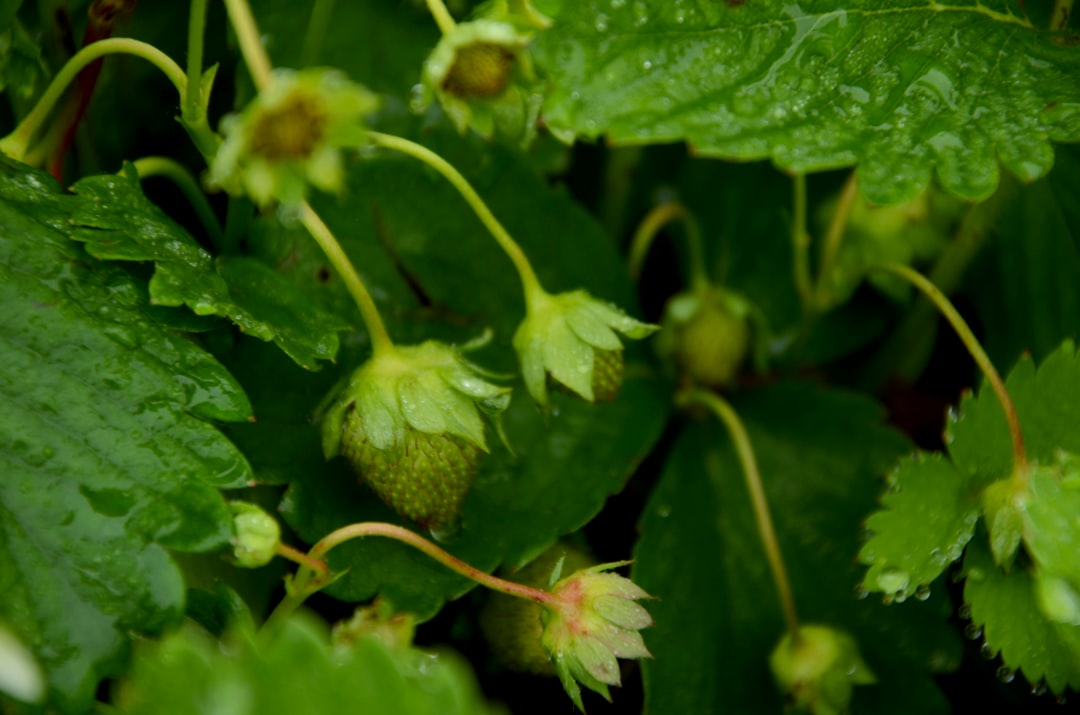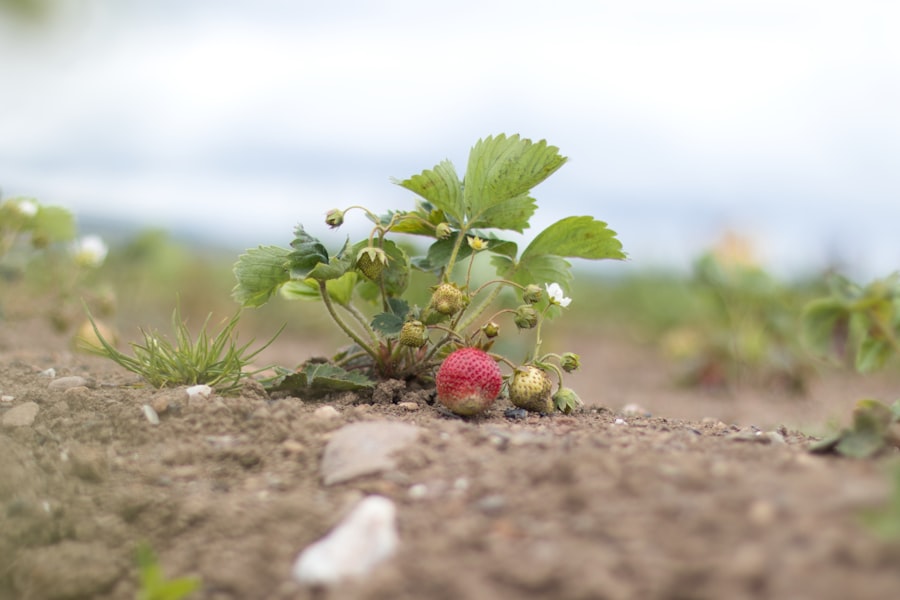Planting Strawberry Plants: Best Time to Start

Growing strawberries at home can be a rewarding and delicious experience. Not only do they provide a sweet and juicy treat, but they also offer numerous health benefits. Strawberries are packed with vitamins, minerals, and antioxidants that can boost your immune system, improve heart health, and promote healthy skin.
To ensure successful growth and a bountiful yield, it is important to follow proper planting techniques. This includes selecting the right time to plant, preparing the soil, choosing the right variety, and providing the necessary care and maintenance. By understanding these key factors, you can enjoy a thriving strawberry garden that will provide you with fresh berries for years to come.
Understanding the Best Time to Start Planting Strawberry Plants
The best time to start planting strawberry plants depends on your location and climate. In general, there are three main planting seasons for strawberries: spring, summer, and fall.
Spring planting is the most common and recommended time for planting strawberries. This is because strawberries require a period of cold dormancy in order to produce fruit. By planting in the spring, you allow the plants to establish their roots before the hot summer months arrive.
Summer planting is an option for those living in cooler climates or areas with mild summers. However, it is important to provide extra care and protection to ensure the plants do not suffer from heat stress.
Fall planting is ideal for regions with mild winters. By planting in the fall, you give the plants time to establish their roots before the cold weather sets in. This allows them to be better prepared for growth and fruit production in the following spring.
Factors that affect the ideal planting time include average temperatures, frost dates, and the specific variety of strawberry being planted. It is important to research and understand these factors for your specific location in order to determine the best time to start planting.
Factors to Consider Before Planting Strawberry Plants
Before planting strawberry plants, there are several factors to consider to ensure their success. These include soil type and pH level, sunlight and water requirements, and climate and weather conditions.
Strawberries prefer well-drained soil that is rich in organic matter. They thrive in slightly acidic soil with a pH level between 5.5 and 6.5. It is important to test your soil’s pH level and make any necessary adjustments before planting. Adding organic matter, such as compost or aged manure, can improve the soil’s fertility and drainage.
Sunlight is crucial for the growth and development of strawberry plants. They require at least 6-8 hours of direct sunlight per day. Choose a location in your garden that receives ample sunlight throughout the day.
Water is also essential for the health of strawberry plants. They require consistent moisture, but not excessive waterlogging. Proper drainage is important to prevent root rot and other diseases. It is recommended to water strawberries deeply once or twice a week, depending on the weather conditions.
Consider your climate and weather conditions when planting strawberries. Some varieties are better suited for colder climates, while others thrive in warmer regions. It is important to choose varieties that are well-adapted to your specific climate in order to ensure successful growth and fruit production.
Preparing the Soil for Planting Strawberry Plants
| Soil Preparation Metric | Measurement |
|---|---|
| Soil pH | 5.5-6.5 |
| Soil Type | Loamy, well-draining |
| Organic Matter | 2-3% |
| Nitrogen | 50-100 lbs/acre |
| Phosphorus | 50-100 lbs/acre |
| Potassium | 50-100 lbs/acre |
| Soil Temperature | 50-60°F |
| Soil Moisture | Moist, not waterlogged |
Preparing the soil is a crucial step in ensuring the success of your strawberry plants. Start by removing any weeds or grass from the planting area. This can be done by hand or with the help of a garden hoe or tiller.
Once the area is clear of weeds, it is important to add organic matter to the soil. This can be done by incorporating compost, aged manure, or other organic materials into the top few inches of soil. Organic matter helps improve soil structure, fertility, and drainage.
In addition to organic matter, it is important to provide the necessary nutrients for the strawberry plants. This can be done by adding a balanced fertilizer, such as a 10-10-10 or 14-14-14, to the soil before planting. Follow the instructions on the fertilizer package for the recommended application rate.
After adding organic matter and fertilizer, it is important to mix them into the soil thoroughly. This can be done by using a garden fork or tiller to loosen and blend the soil. Aim for a loose and crumbly texture that will allow the roots to penetrate easily.
Choosing the Right Strawberry Plant Varieties
There are several different types of strawberries to choose from, each with its own unique characteristics and flavor profiles. When selecting the best variety for your garden, consider factors such as taste preference, climate suitability, disease resistance, and fruiting season.
June-bearing strawberries are the most common type and produce a large crop of berries in late spring or early summer. They are known for their excellent flavor and firm texture. Popular varieties include ‘Chandler’, ‘Earliglow’, and ‘Allstar’.
Everbearing strawberries produce two main crops, one in spring and another in late summer or fall. They also produce smaller harvests throughout the growing season. Everbearing strawberries are a good choice for those who want a continuous supply of berries. Popular varieties include ‘Seascape’, ‘Quinault’, and ‘Ozark Beauty’.
Day-neutral strawberries are a newer type that produce fruit throughout the growing season, regardless of day length. They are known for their high yield and sweet flavor. Popular varieties include ‘Tristar’, ‘Albion’, and ‘Seascape’.
Consider your climate and growing conditions when selecting strawberry varieties. Some varieties are better suited for colder climates, while others thrive in warmer regions. It is important to choose varieties that are well-adapted to your specific climate in order to ensure successful growth and fruit production.
Planting Techniques for Strawberry Plants

Proper planting techniques are essential for the success of your strawberry plants. Follow these step-by-step instructions to ensure healthy growth and maximum fruit production:
1. Prepare the planting area by removing any weeds or grass and adding organic matter and fertilizer to the soil.
2. Dig a hole that is wide and deep enough to accommodate the roots of the strawberry plant. Make sure the hole is large enough to spread out the roots without bending or crowding them.
3. Place the strawberry plant in the hole, making sure that the crown (the area where the leaves meet the roots) is level with or slightly above the soil surface. Avoid burying the crown too deep, as this can lead to rotting.
4. Gently backfill the hole with soil, firming it around the roots to eliminate any air pockets. Be careful not to compact the soil too much, as this can hinder root growth.
5. Water the newly planted strawberry plants thoroughly to settle the soil and provide moisture to the roots.
When planting strawberries, it is important to space them properly to allow for adequate air circulation and prevent disease. Space June-bearing strawberries 12-18 inches apart in rows that are 3-4 feet apart. Everbearing and day-neutral strawberries can be spaced closer together, about 8-12 inches apart in rows that are 2-3 feet apart.
Caring for Strawberry Plants After Planting
After planting, it is important to provide proper care and maintenance to ensure the health and productivity of your strawberry plants.
Watering is crucial for strawberry plants, especially during dry periods or hot weather. They require consistent moisture, but not excessive waterlogging. It is recommended to water strawberries deeply once or twice a week, depending on the weather conditions. Avoid overhead watering, as this can promote disease.
Fertilizing is also important for strawberry plants. They benefit from regular applications of a balanced fertilizer, such as a 10-10-10 or 14-14-14. Apply the fertilizer according to the package instructions, usually every 4-6 weeks during the growing season. Be careful not to over-fertilize, as this can lead to excessive foliage growth and reduced fruit production.
Pest and disease prevention is crucial for the health of your strawberry plants. Common pests that affect strawberries include slugs, snails, aphids, and spider mites. Regularly inspect your plants for signs of pest damage and take appropriate measures to control them. Disease prevention includes proper spacing, good air circulation, and regular removal of diseased leaves or fruits.
Tips for Maximizing Strawberry Plant Growth and Yield
To maximize the growth and yield of your strawberry plants, consider implementing the following tips:
Pruning and thinning techniques can help promote healthy growth and increase fruit production. Remove any runners or daughter plants that emerge from the main plant, as they can divert energy away from fruit production. Prune off any dead or diseased leaves or stems to prevent the spread of disease.
Mulching is important for strawberry plants as it helps conserve moisture, suppress weeds, and protect the fruit from direct contact with the soil. Apply a layer of straw or pine needles around the plants, making sure to keep it away from the crown to prevent rotting.
Weed control is crucial for strawberry plants as they compete for nutrients and water. Regularly remove any weeds that emerge around the plants, taking care not to disturb the shallow roots.
Common Problems and Solutions When Planting Strawberry Plants
When planting strawberry plants, there are several common problems that may arise. By being aware of these issues and taking appropriate measures, you can prevent or treat them effectively.
One common problem is fungal diseases such as gray mold (Botrytis cinerea) and powdery mildew (Podosphaera aphanis). These diseases can cause fruit rot and reduce yield. To prevent fungal diseases, provide good air circulation, avoid overhead watering, and remove any diseased leaves or fruits.
Another common problem is pest infestation, including slugs, snails, aphids, and spider mites. These pests can damage the leaves and fruits of strawberry plants. To control pests, regularly inspect your plants for signs of infestation and take appropriate measures such as handpicking or using organic pest control methods.
Nutrient deficiencies can also occur in strawberry plants, leading to stunted growth and poor fruit production. Common nutrient deficiencies include nitrogen, phosphorus, and potassium. To prevent nutrient deficiencies, regularly fertilize your plants with a balanced fertilizer and monitor their growth for any signs of deficiency.
Harvesting and Enjoying Fresh Strawberries from Your Garden
Harvesting strawberries at the peak of ripeness is essential for enjoying their full flavor and sweetness. Strawberries are ready to be harvested when they are fully red and firm. Gently twist or cut the stem just above the fruit to harvest it without damaging the plant.
Fresh strawberries can be enjoyed on their own or used in a variety of recipes. They can be added to salads, smoothies, desserts, or used to make jams and preserves. If you have an abundance of strawberries, consider freezing them for later use. Simply wash and dry the berries, remove the stems, and place them in a single layer on a baking sheet. Once frozen, transfer them to a freezer-safe container or bag.
Planting strawberries at home can be a rewarding experience that allows you to enjoy fresh and delicious berries right from your own garden. By understanding the best time to plant, preparing the soil properly, choosing the right variety, and providing the necessary care and maintenance, you can ensure successful growth and maximum fruit production. With proper planning and attention to detail, you can enjoy a thriving strawberry garden that will provide you with an abundance of sweet and juicy berries for years to come. So why not give it a try and enjoy the delicious fruits of your labor?



